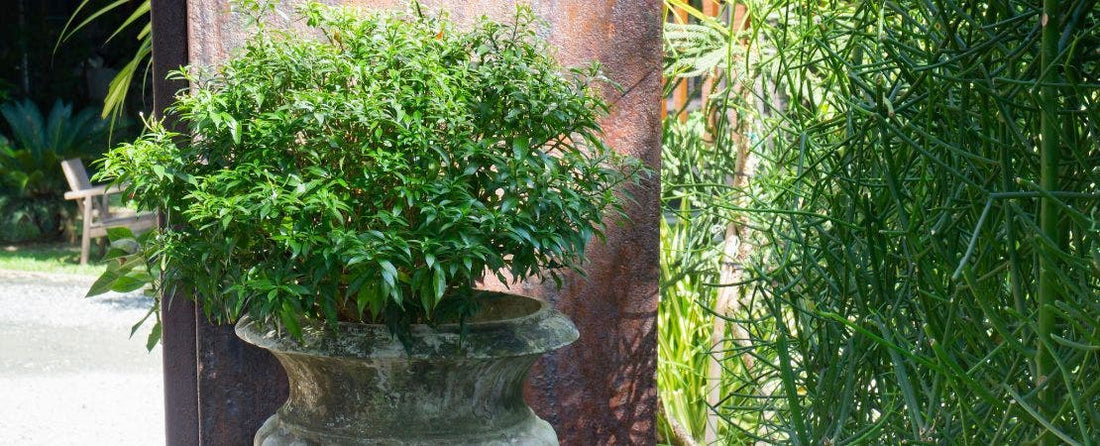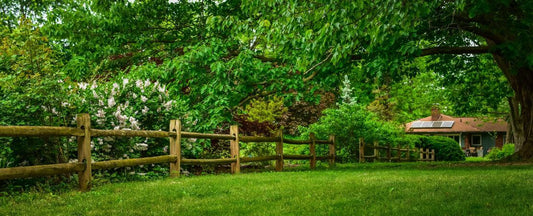How to Use Shrubs and Trees in Pots

Combine a Shrub or Tree with Perennials and Annuals for a One-of-a-kind Container.
Creating container gardens in small spaces like patios, rooftops, and courtyards, aren't only for flowers any more. New varieties of long-loved shrubs are easier to grow and more compact than ever. When you garden in a small-space, there's no need to shy away from the height and structure of trees and shrubs. Larger mixed containers are ideal to feature these larger plants properly.
Tips for Including Trees and Shrubs in Containers
While most containers are designed to include thrillers, fillers, and spillers, containers designed around shrubs or trees follow their own set of rules. Here is how to design a container blending shrubs/trees, perennials, and annuals together to great effect:
1. Since the tree or shrub will grow to be the largest plant by far, this is the cornerstone of the design. Lovely compact choices for mixed containers are: compact acer, camellia, buddleia, hydrangea, or crepe myrtle.
2. The container is the next most important thing to determine. Larger, broader containers are often required. Halved wine barrels or large cement planters are good choices for a permanent fixture, as their weight ensures that they won't get blown over easily. The material, shape, and color of the container will become an integral part of the design, so be sure to pick one that complements the focal plant.
3. Draw out your plans. This will help you visualize how the tree or shrub will fill the space when fully grown.
4. Use annuals front and center to add bold color to the display. Great selections include: begonia, calibrachoa, impatiens, lantana, or pre-mixed combinations.
5. Use perennials in between to fill out the space and add their own lovely color and texture. Some of the best perennials for this role are: blanket flower, coral bells, ferns, or Shasta daisy.
6. Be sure that you use plants that require the same conditions. It should go without saying that putting a plant that wants dry, acidic soil in full sun and a plant that wants damp, basic soil in full shade will not work out too well. Do your research up front and create a combination that will all be able to thrive in the same soil and light conditions.
7. Use a mixture of early-, mid-, and late-season plants to ensure a constant display of color.
8. Keep in mind that trees and shrubs have much larger root systems than most container plants, and thus will require more watering to stay healthy.



